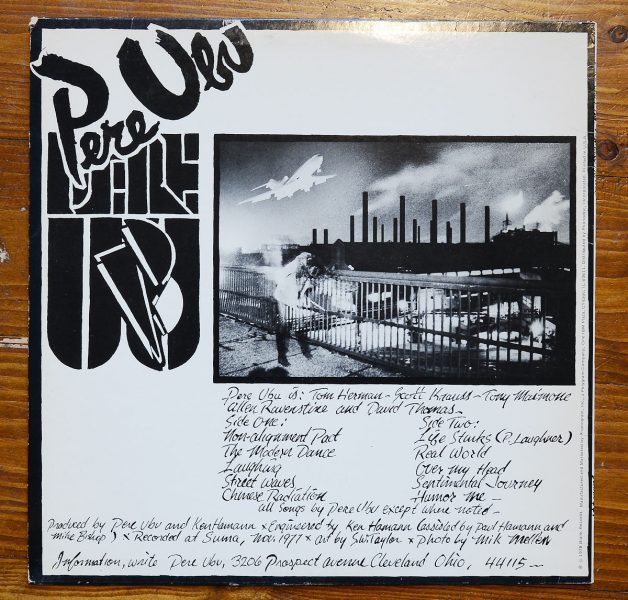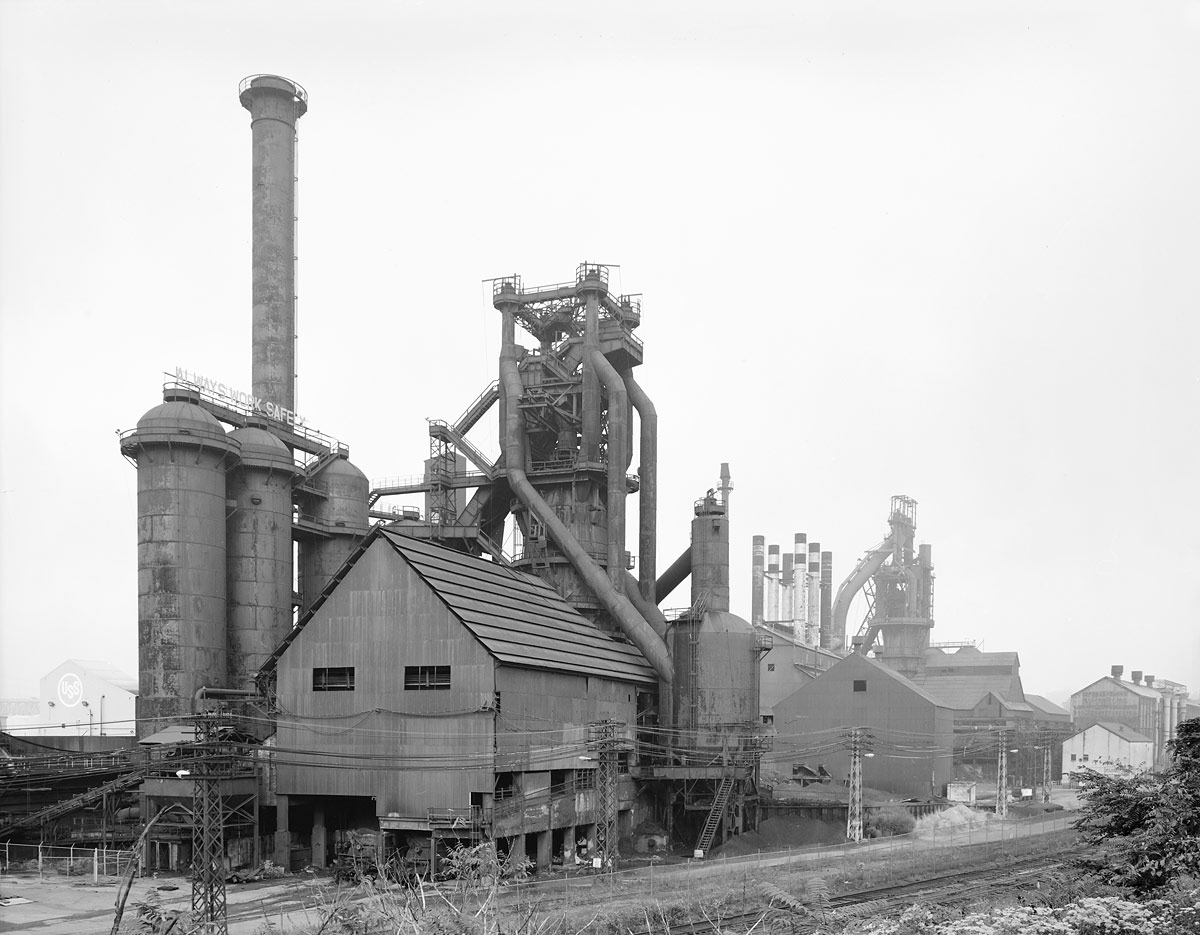The legendary US underground band Pere Ubu from Cleveland, Ohio was one of the first to address the atmosphere of their declining heavy industrial homeland in lyrics and on record covers.

From now demolished Pershing Av. bridge.
No. 1 slabbing mill in the foreground, no. 2 BOF right, open hearth shop in the background.
Frontman and mastermind David Thomas on growing up in Cleveland in the 1970ies:
We were savages living in the ruins of a great civilization of Rockefellers and Carnegies. Growing up, we owned downtown. Nobody wanted it. We roamed the streets like they were ours. The Flats was a place of deep mystery. It was our modern art museum. We would drive through the steel mills and within 20 yards of open blast furnaces. We weren’t duplicating those sounds. Those sounds were showing us the way to change the narrative vehicle of modern music.
(Cleveland Magazine, 11/22/2017)


